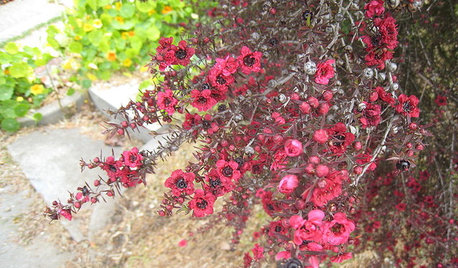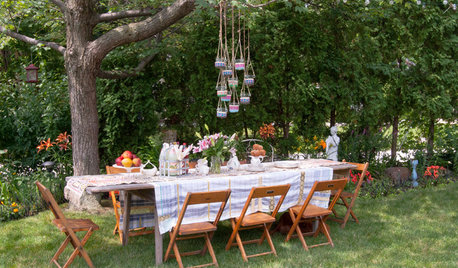Tea Tree Oil
joereal
16 years ago
Related Stories

GARDENING GUIDESGreat Design Tree: Australian Tea Tree
A living sculpture with an unmistakable appearance, this coastal native creates an intriguing landscape scene
Full Story
GARDENING GUIDESGreat Design Plant: New Zealand Tea Tree
Balance pretty polish and ruggedness in a temperate garden with this low-maintenance and drought-tolerant flowering shrub
Full Story
EDIBLE GARDENSTake Refuge in an Iced Tea Garden
Cultivate the fine art of lounging in the shade and sipping a cold beverage
Full Story
GARDENING GUIDESHow to Keep Your Citrus Trees Well Fed and Healthy
Ripe for some citrus fertilizer know-how? This mini guide will help your lemon, orange and grapefruit trees flourish
Full Story
LIFEHow Do You Make Your Tea and Coffee in the Morning?
A morning cup is a must for many, and preparation comes in many guises. We look at coffee and tea habits across the Houzz community
Full Story
ENTERTAININGHow to Host a Tea Party at Home
Many people are reacquainting themselves with the gracious British ritual, steeped in tradition, that is perfect for an outdoor gathering
Full Story
KITCHEN DESIGNHot Ideas and Tips for Coffee and Tea Stations
Let options like drawer inserts and built-in coffeemakers percolate now, so your hot-drinks station can best serve holiday guests
Full Story
ENTERTAININGThe Busy Mom's Guide to Throwing a Kids' Holiday Tea Party
Even Fancy Nancy would thrill to be a guest at this easy event, where no one will know the shortcuts but you
Full Story
MOST POPULARA Magical Tree House Lights Up for Christmas
From the Most Popular file: An incredible tree house takes things up a notch for the holidays. See how it came to be
Full Story
MOST POPULARThe Most Incredible Kids' Tree House You'll Ever See?
Duck your head to enter this unforgettable Dallas wonderwork, lovingly crafted with imaginative delights
Full StoryMore Discussions







joerealOriginal Author
joerealOriginal Author
Related Professionals
Essex Landscape Architects & Landscape Designers · Glendora Landscape Architects & Landscape Designers · Graham Landscape Architects & Landscape Designers · Ilchester Landscape Architects & Landscape Designers · Kapaa Landscape Architects & Landscape Designers · Quincy Landscape Architects & Landscape Designers · Corona Landscape Contractors · Deer Park Landscape Contractors · Holland Landscape Contractors · Long Branch Landscape Contractors · Old Saybrook Landscape Contractors · Placerville Landscape Contractors · Tamarac Landscape Contractors · Tavares Landscape Contractors · View Park-Windsor Hills Landscape Contractorschills71
joerealOriginal Author
jellyman
joerealOriginal Author
ca_cherry_grower
joerealOriginal Author
ca_cherry_grower
joerealOriginal Author
april15